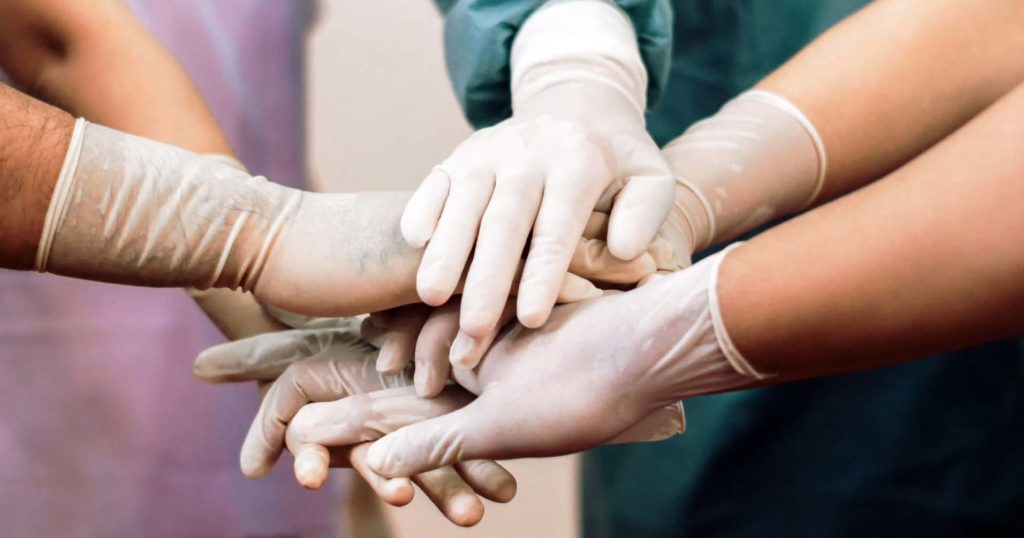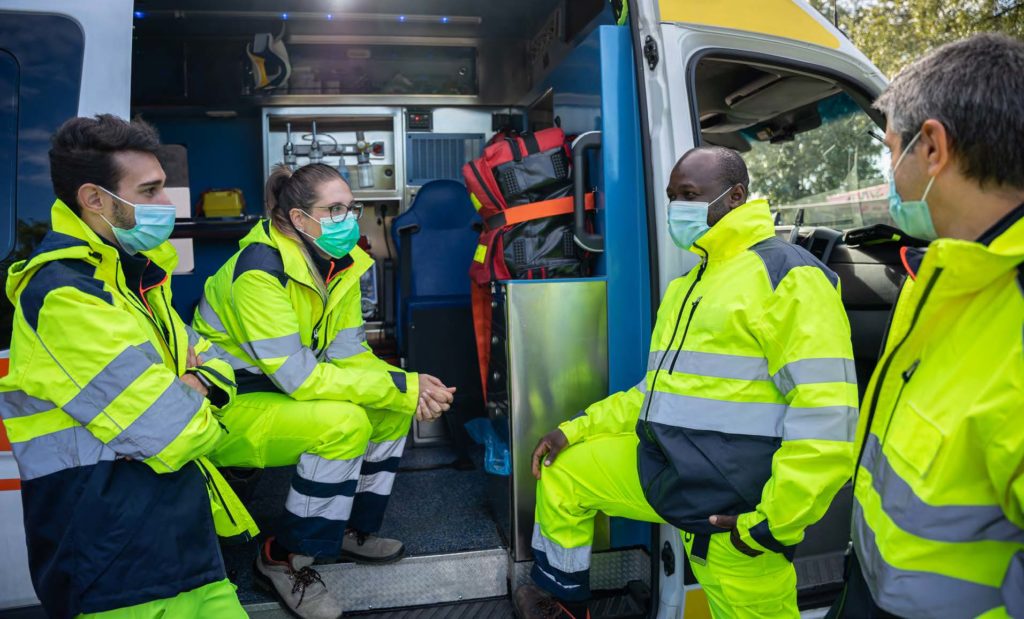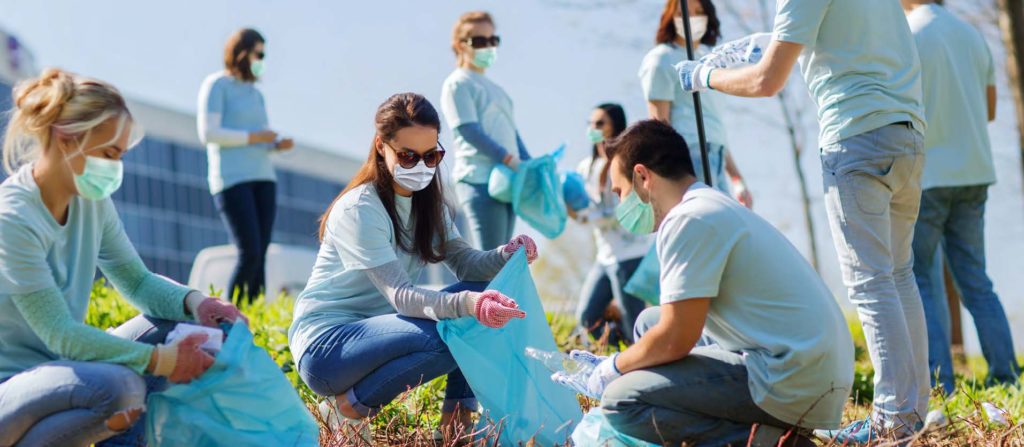Volunteer managers at state and local public health and emergency response agencies have long relied on Juvare’s CORES RMS platform to help them connect to needed human and physical resources in times of acute emergency and disaster.

From critical medical tasks like distributing medication to ground-zero disaster mitigation efforts like filling sandbags, the comprehensive CORES credentialing system ensures that volunteers and responders are appropriately trained and qualified to serve, based on their expertise and certifications.
Despite the increasing number of both man-made emergencies and natural disasters that CORES and its customers routinely address, nothing could have prepared public health and emergency systems for the staffing challenges brought on by the COVID-19 pandemic in 2020. Best practices for volunteer management were insufficient. Standard administrative and logistical processes like registering and credentialing healthcare volunteers were rendered obsolete as volunteer managers worked to support all aspects of response.
Volunteer managers at many public health and emergency response agencies use the JUVARE CORES platform to enlist, register, and credential professional healthcare volunteers, to support all aspects of response; from medical tasks, evaluations, vaccinations, and distribution of medications, to filling the occasional sandbag.
Those agencies with the JUVARE CORES platform in place were better positioned to manage, train, and process the massive number of volunteers. However, an unprecedented drain on resources presented by COVID-19—and the sudden deluge of volunteers resulting from state-wide recruiting announcements from the top level of state government, presented unprecedented challenges for even the most prepared agencies.

Many months into the COVID-19 crisis, when it became clear that there was no foreseeable end to the pandemic—and by extension, the high demand for volunteers—Juvare’s Client Success Manager, Ann Marie Brown (Brown, Juvare), sat down with several of JUVARE CORES customers to assess the new reality in volunteer recruitment, as well as lessons learned during the ongoing pandemic. Specifically, Brown asked the panelists questions about:
• volunteer management in typical (pre-COVID) times
• managing the sudden influx of too many volunteers at once
• how to keep volunteers engaged after the COVID crisis ends.
• Antonio Hernandez, Section Chief, Partner Integrations Arizona Department of Health Services (Hernandez, AZDHS)
• David Rivera, Program Coordinator, Center for Health Emergency Preparedness and Response (Rivera, PHCP, TX)
• Theresa Gonzales, Response Personnel Unit Manager, California Emergency Medical Services Authority (Gonzales, EMSA, CA)
• Lauren Molina, Senior Emergency Services Coordinator, California Emergency Medical Services Authority (Molina, EMSA, CA)
The recruitment and management of healthcare volunteers during peak crisis times, ranging from natural disasters to the current pandemic, have long been a challenge. Volunteer managers at public health and emergency response agencies, historically overtaxed and underfunded, struggle to recruit and coordinate volunteer resources in times of low and high medical demand.
Lauren Molina (Molina, EMSA, CA) commented that her team has typically recruited volunteers locally using brochures, handbooks, pocket guides, and a journal they publish three times a year. “We have various skills exercises we do. We attend different recruitment events: preparedness days, the California Hospital Association. We connect with various medical boards and have brochures at their offices and at different schools.”
Hernandez, AZDHS: “For pulling in volunteers, we have a network of volunteer groups throughout the state. They all integrate with our platform, and they all have their own units, so we have medical reserve corps (MRCs). We’re part of the volunteer program at the Governor’s office and also with our various community organizations. We are currently working on a rebranding campaign, which includes media buys and social media, billboards, radio reaching out to AZ medical volunteer professionals (MVPs).”
Also, Antonio said they were partnered with boards and associations for recruiting for critical areas like respiratory therapists.
Since early 2020, the COVID pandemic has presented an unprecedented need for volunteers in healthcare and emergency, so much so, that governors in many states issued calls for volunteers via mass communications. While their calls for help were effective—some volunteer managers reported more than a quadruple increase in volunteers—the massive influx taxed emergency response programs and public health agencies that lacked the infrastructure to support the influx.

“We have our 58 counties organized locally, as well as over 30 MRC units organized locally. We also have our California Medical Assistance Program (CAL-MAT), which is modeled off of DMAT. With that program, we went from 200 to over 600 volunteers, and we have 1,300 pending applications just for that program.”
Governor. Gavin Newsom (CA) issued a public callout on March 30 that resulted in thousands of new volunteer applicants flooding an infrastructure that had no precedent for this turnout. “We had over 50,000 people sign up in a matter of days. With that came a huge workload.”
A new reality faced volunteer managers nationwide, brought on by unforeseen circumstances. While the JUVARE CORES platform helped customers navigate new challenges to administrative, training, and logistical resources, panelists learned lessons about staffing in times of shortage and great need.
(Hernandez, AZDHS) said one of the top challenges in Arizona was in the infrastructure and flow—being able to manage the inquiries and support requests. “We were hit with several hundred volunteers coming in at once, so the first thing we did was set up Customer Service TA [technical assistance], equipped with a single-point email address.
“We merged our Juvare internal messaging system with our Gmail account to set up oneway emails. We didn’t reply back through the email, as that would have cluttered up inboxes with layers of copying and CCs.”
The single-point email system enabled autoreplies, quick responses, and reporting feature so the team could assess changes in the types of questions they were receiving. Another support for AZDHS came in the form of contracted help. “We contracted through a temp agency for additional personnel, and we have replacements ready as we gear up for a second round [of COVID].”
“We needed to have clear communication with everyone. We noticed we had a lack of administrative staff in the beginning, so we pulled in our CAL-MAT volunteers to help support us. We still have ten people, just in our unit, supporting us in deploying volunteers, getting them out the door and providing support locally, and helping to reconcile their systems to ensure that volunteers in their unit meant to join that unit.”
Molina, EMSA, CA, said they are developing policies and procedures with their CALMAT volunteers to adjust to the long-term deployment many volunteers have faced during the COVID-19 response. “It’s usually just a two-week deployment. COVID is still going on, so we’ve had people out there for months. We’ve had to revise policies and procedures to accommodate that.”
Another challenge, said Theresa (Gonzales, EMSA, CA), was not having everyone trained on the application processes. “In the very beginning, it was just me and Theresa doing onboarding for personnel, and we had to fly out to different sites to get people onboarded and complete applications. It would have been better in the very beginning if we trained a whole team of people at each site to do this application process, so we didn’t have to go from site to site making the applications. Also, figuring out the area of expertise each volunteer has. We’d send them out, but a nurse isn’t just a nurse. There are all types of nurses. We had to make sure they had ICU experience. We had to fill alternate care site roles providing patients. We needed to make sure they that level of expertise before sending them out the door.”

When this branch was created, we really didn’t have anything in place. We didn’t have time to research Standard Operating Procedures (SOPs); we had to piece things together. We did a calldown, and I got different types of people from all over the state. I was very specific for what we needed, but three-quarters of them had no response and recovery experience, much less TDDR experience, so we had to train all these folks on the fly. It went from training in the office to having to train folks virtually. Then we found out that everyone’s bandwidth is different, so we had to use [Microsoft] Teams. And everyone said, ‘What’s Teams?’ Our recruitment process was very difficult. Now, because of this, I have SOPs for all of this. In the end, volunteers should have been recruited at the local level.
“We supported many skilled nursing facilities with our CAL-MAT logistics teams to make sure that our volunteers going out had the proper PPE, that they were fit-tested—we wanted to make sure anyone we were sending out was safe.”
“There is logistical infrastructure that needs to be assessed to make sure all mechanisms are in place,” said Hernandez. Specifically, AZDHS needs help connecting teams when they arrive for duty, expedited license reciprocity and fingerprinting, and fit-testing for PPE.

Further, AZDHS needed to fortify rural areas, where there were curfews in effect. “It’s rural, there’s a curfew, and volunteers have no access to food,” said Hernandez. “People working in their local area will bring food from home or eat at home. But for teams that get mobilized there, care and feeding is going to be very important.” Hernandez said they needed backup plans with emergency MREs like a cycle of food drop-off. “We instituted a helpline so volunteers can call to address anything from transport issues to glitches in their care and feeding.”
“The first thing I would change is to have the volunteers volunteer at their local jurisdictions. This was a big challenge that had a domino effect and was very hard to control. If the state is planning to do a calldown from the Governor, it would be better if the volunteers were redirected to their local volunteer organizations. When the branch was first created, we would receive requests from hospitals requesting volunteers. If the hospital in Brownsville needed volunteers, we would blast the assignment out to all of our volunteers throughout the state. We would get volunteers from Dallas who were expected to travel down to Brownsville on their own dime. The volunteers were spending their own money; it was unfortunate because we were asking a lot of our volunteers and really providing nothing. Some of these facilities were able to provide support—amenities like lodging, food, mileage—but there were facilities that could provide no amenities, so we were not able to fulfill an assignment. The challenge was that the volunteers lived far away, and it was up to them to self-select.”

Introduction In the digital era, the stakes for cybersecurity have never been higher. As threats evolve and multiply, securing sensitive data becomes not just a

This blog post aims to highlight the critical need for advanced emergency management solutions, emphasizing the value of Juvare’s technology in enhancing organizational resilience. The

Have you ever wondered who ensures your safety during the awe-inspiring moments of a solar eclipse? Behind the scenes, emergency management departments work tirelessly to